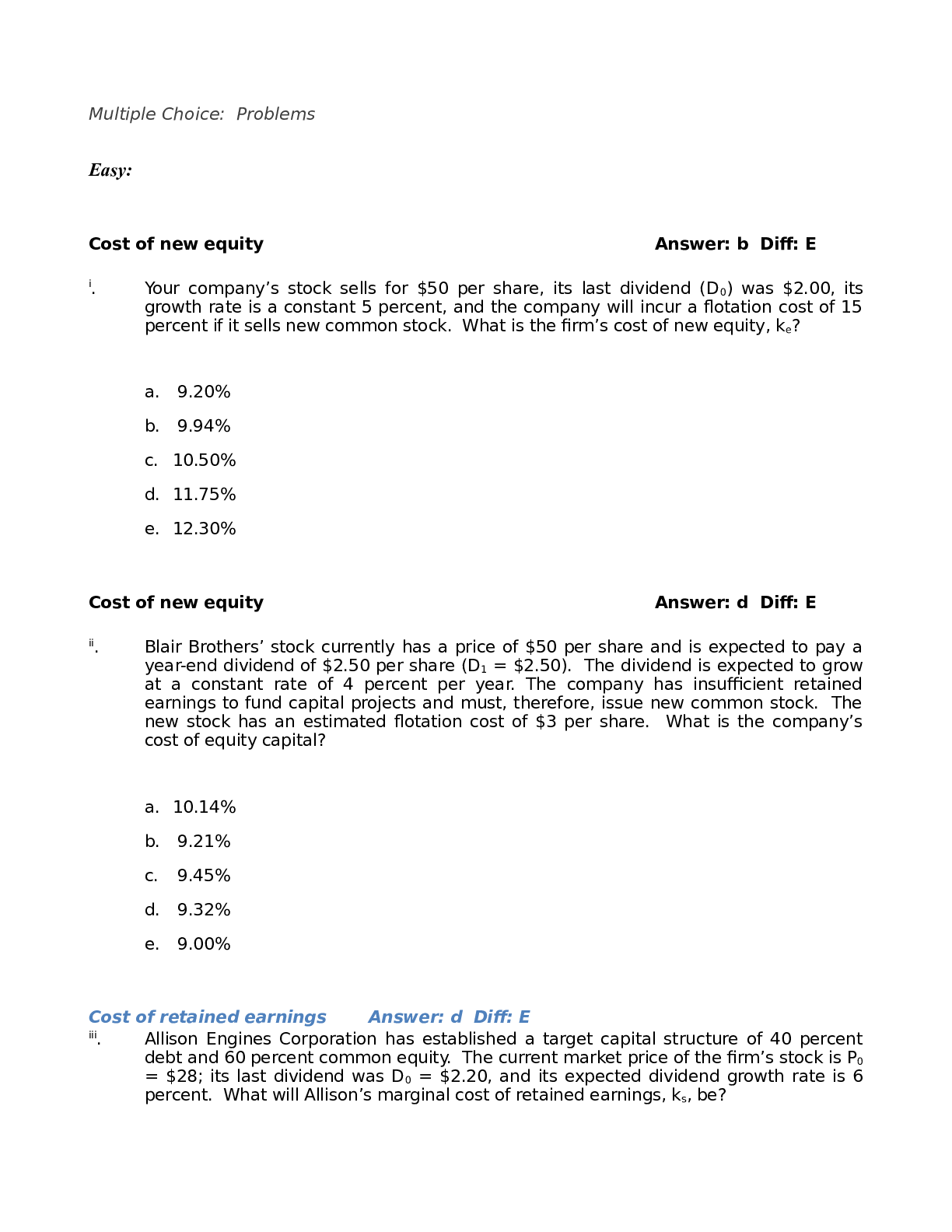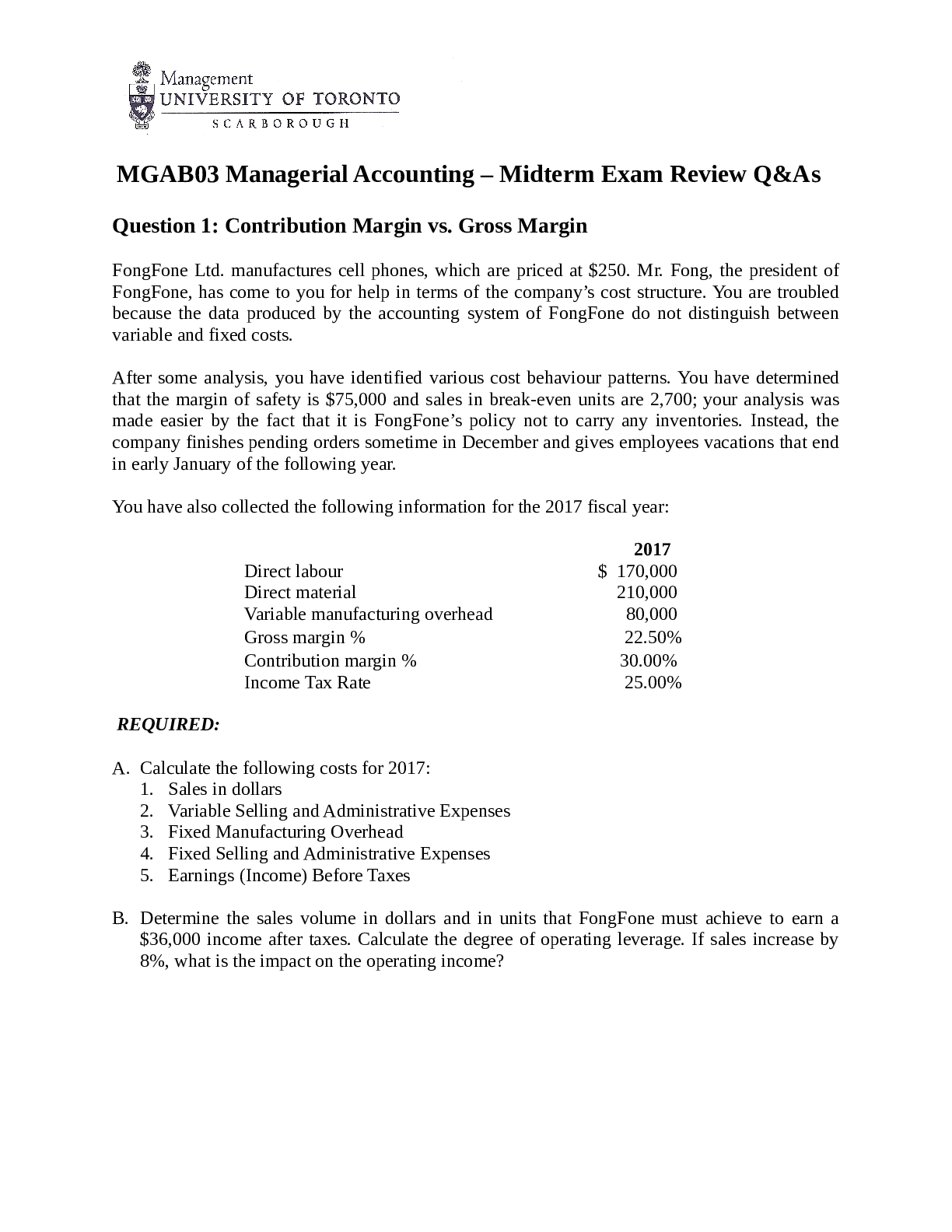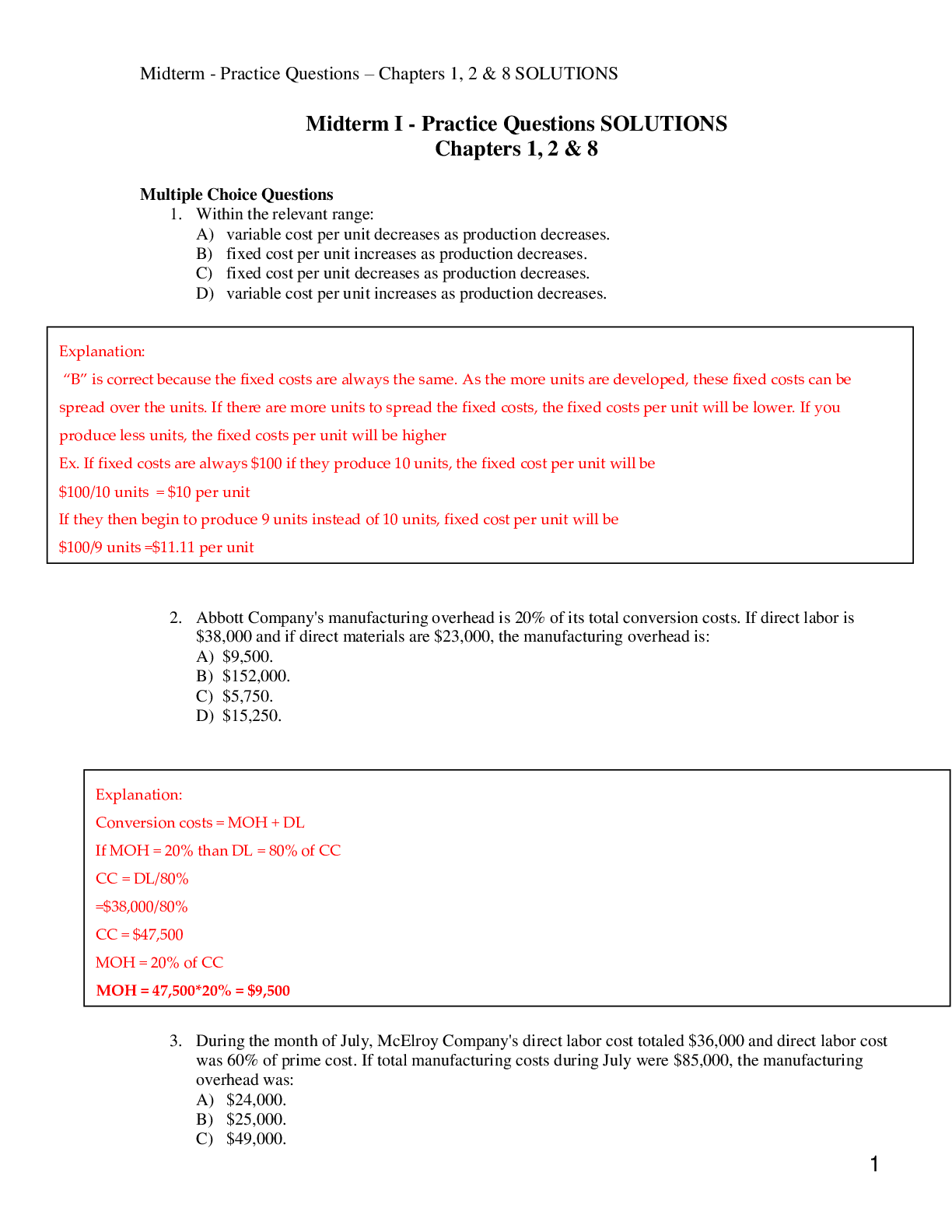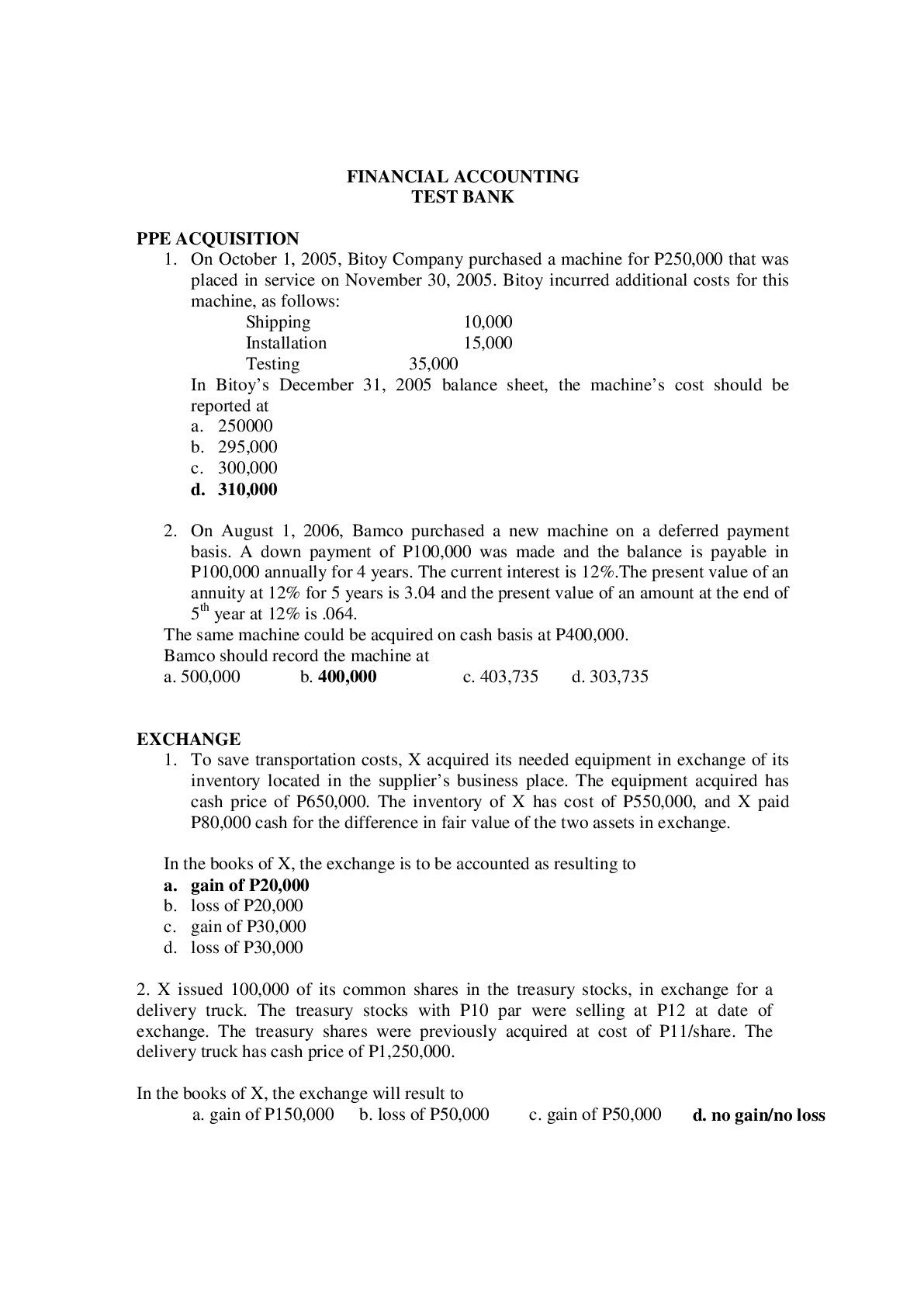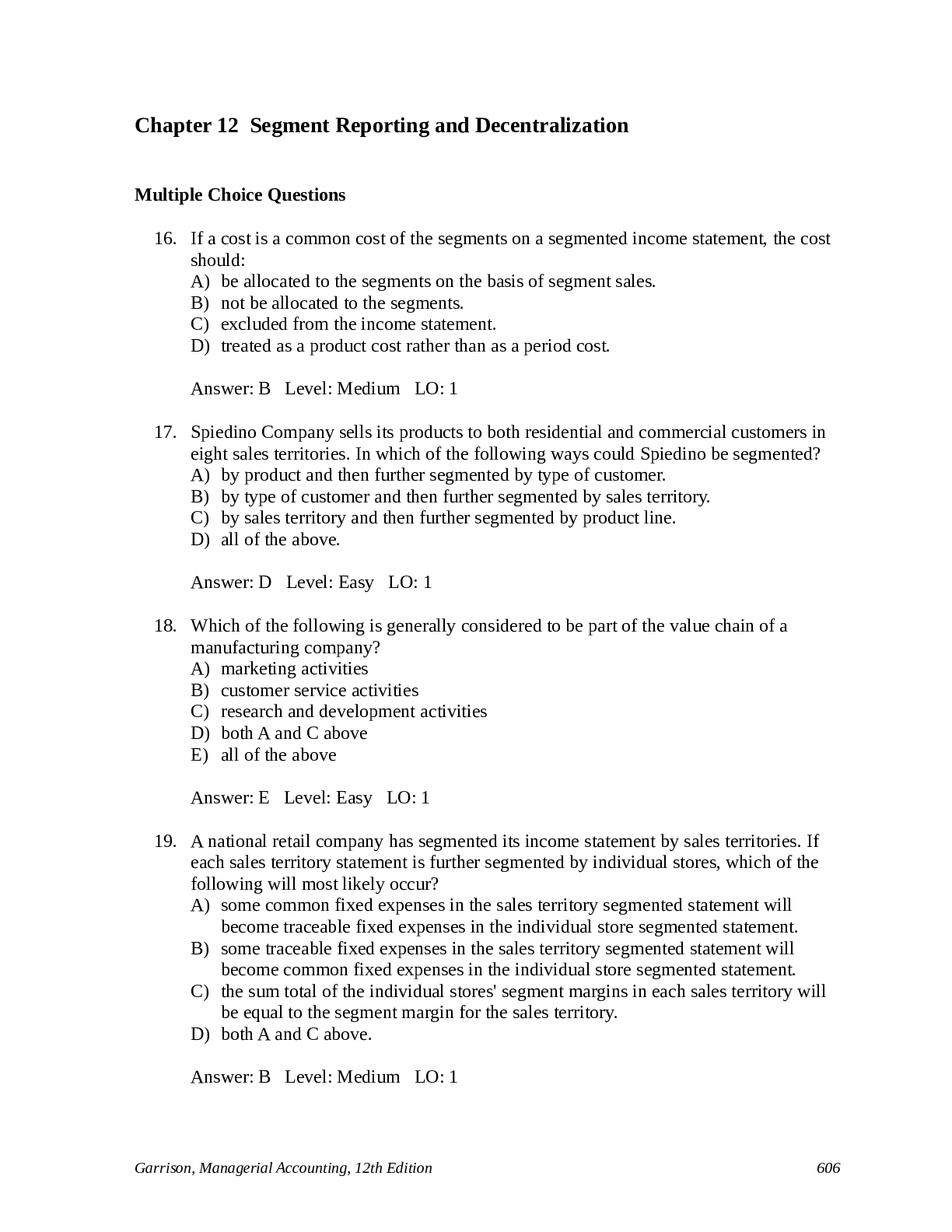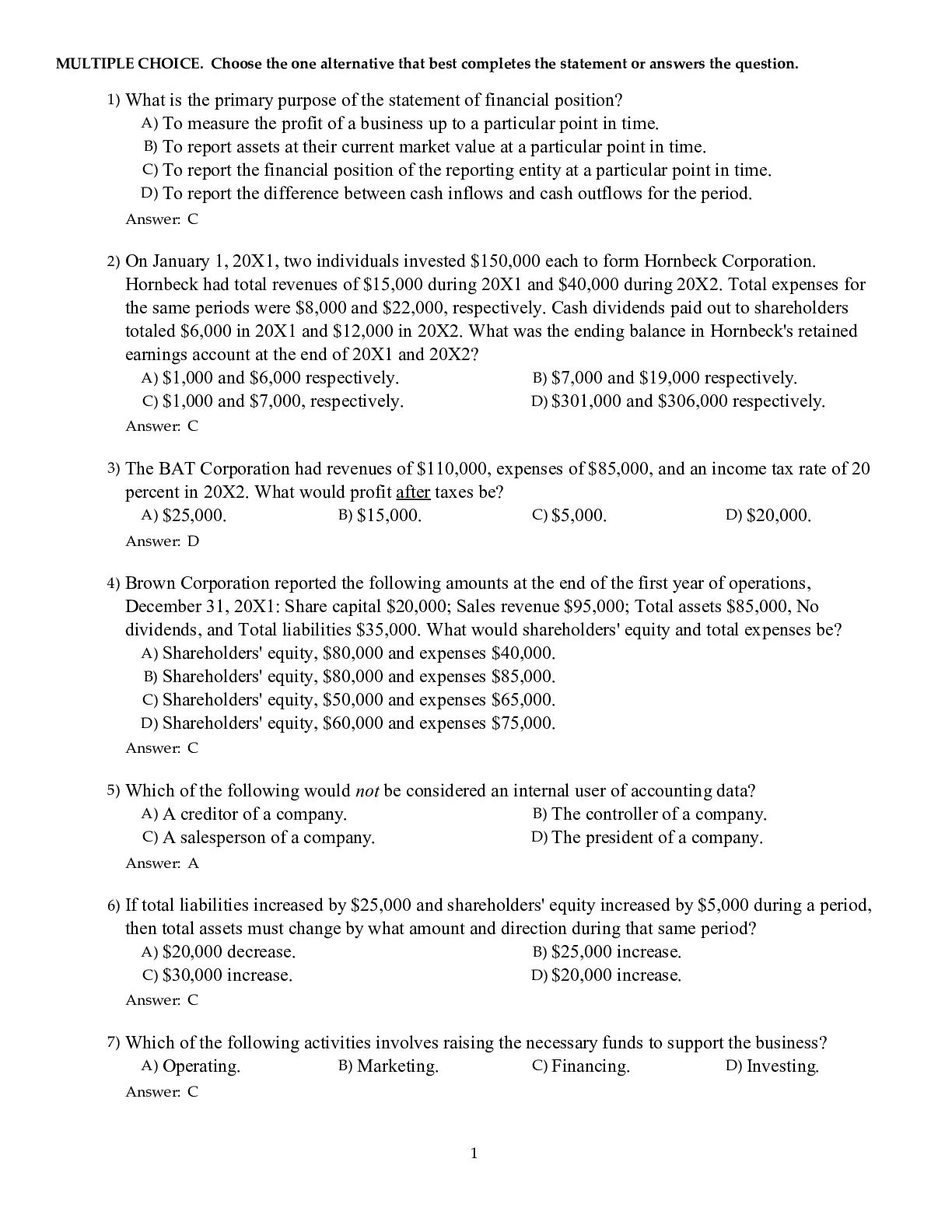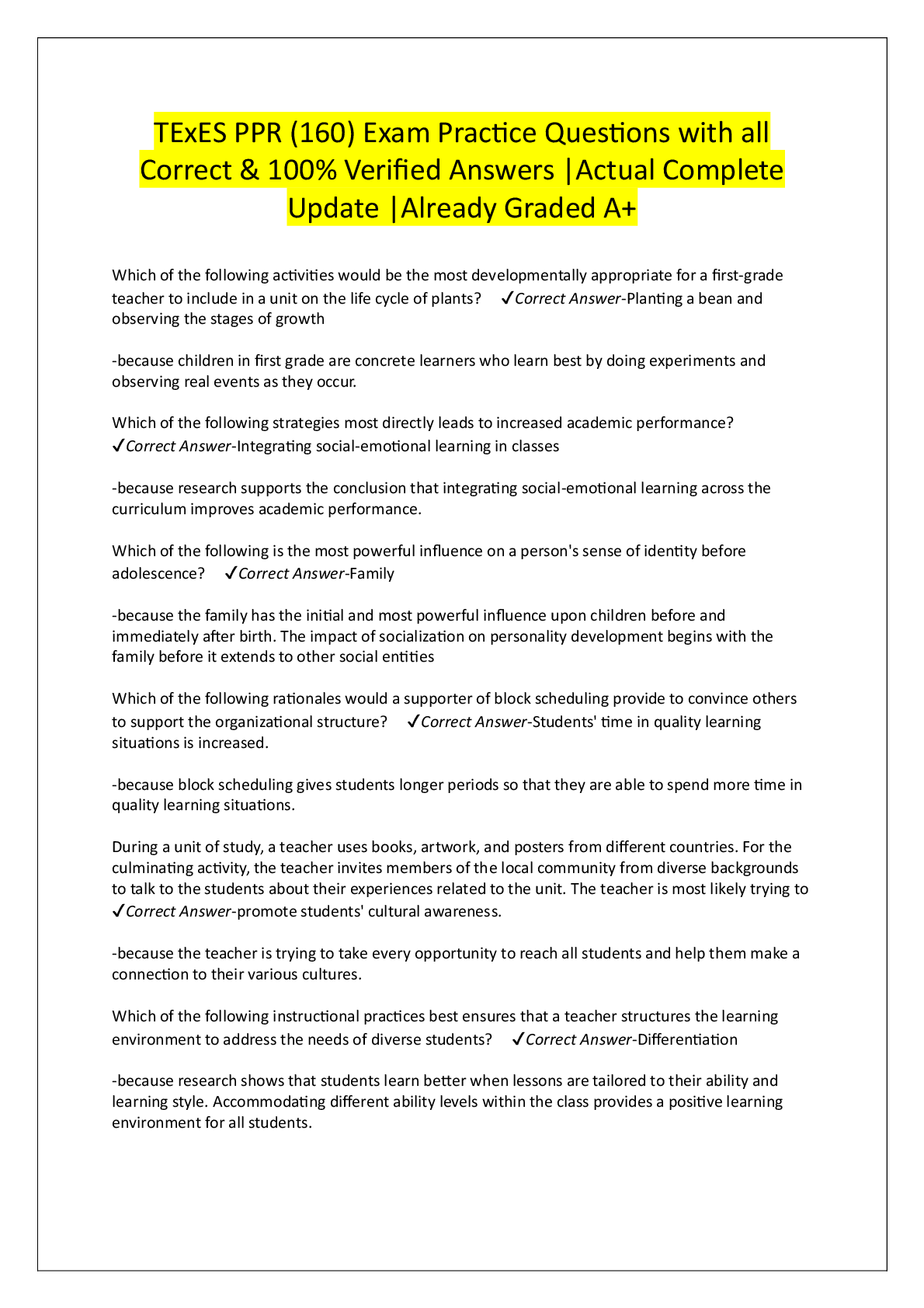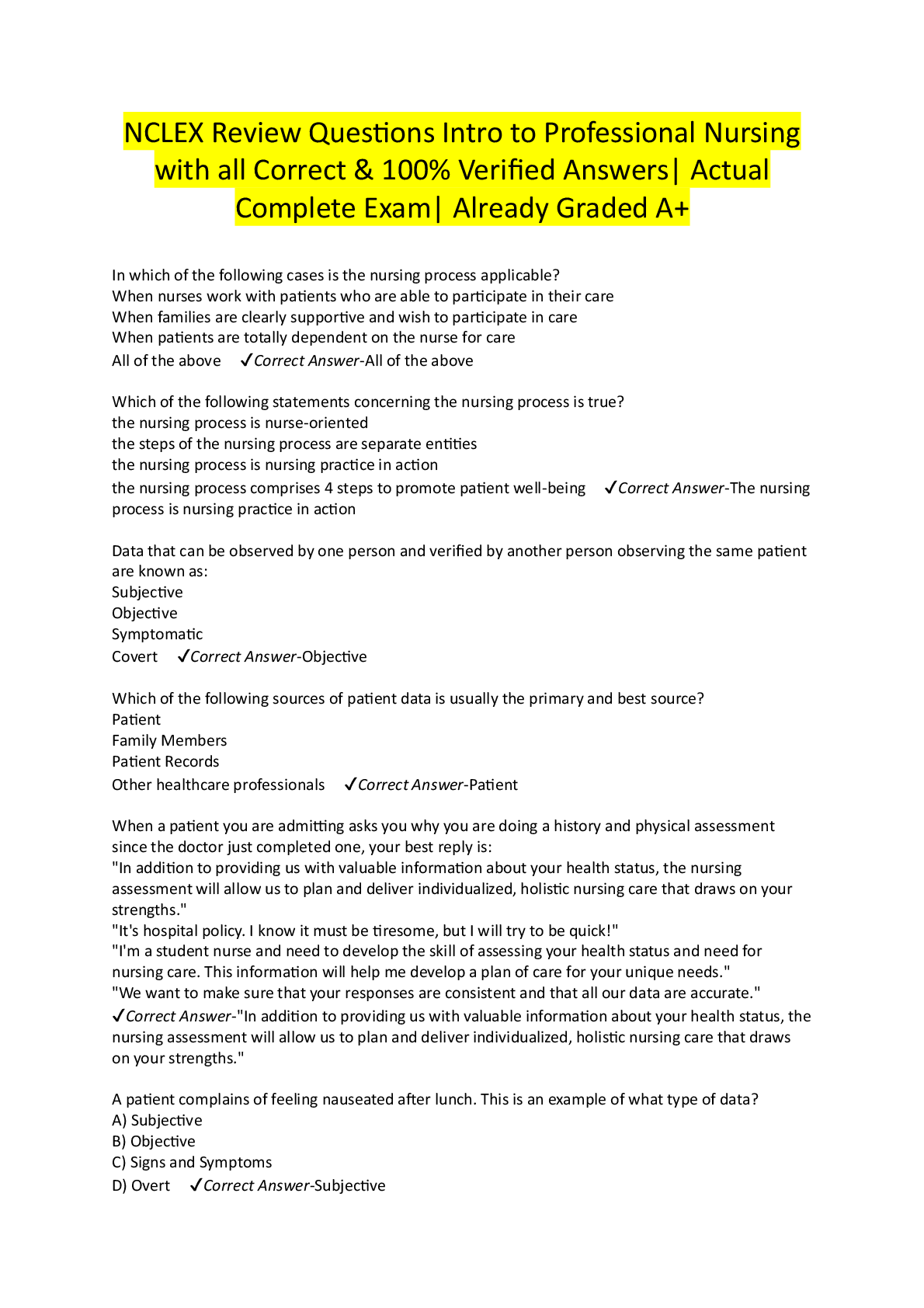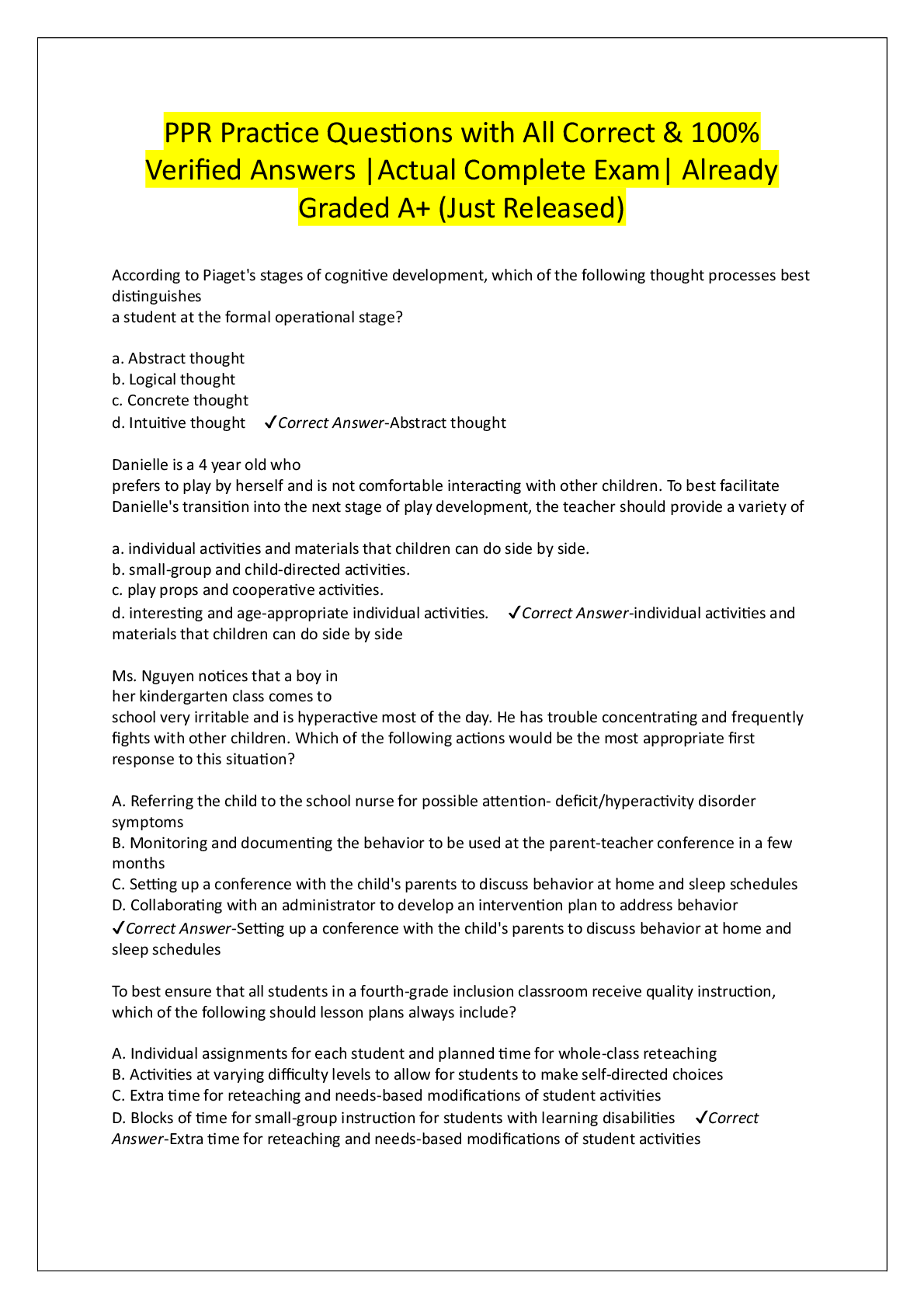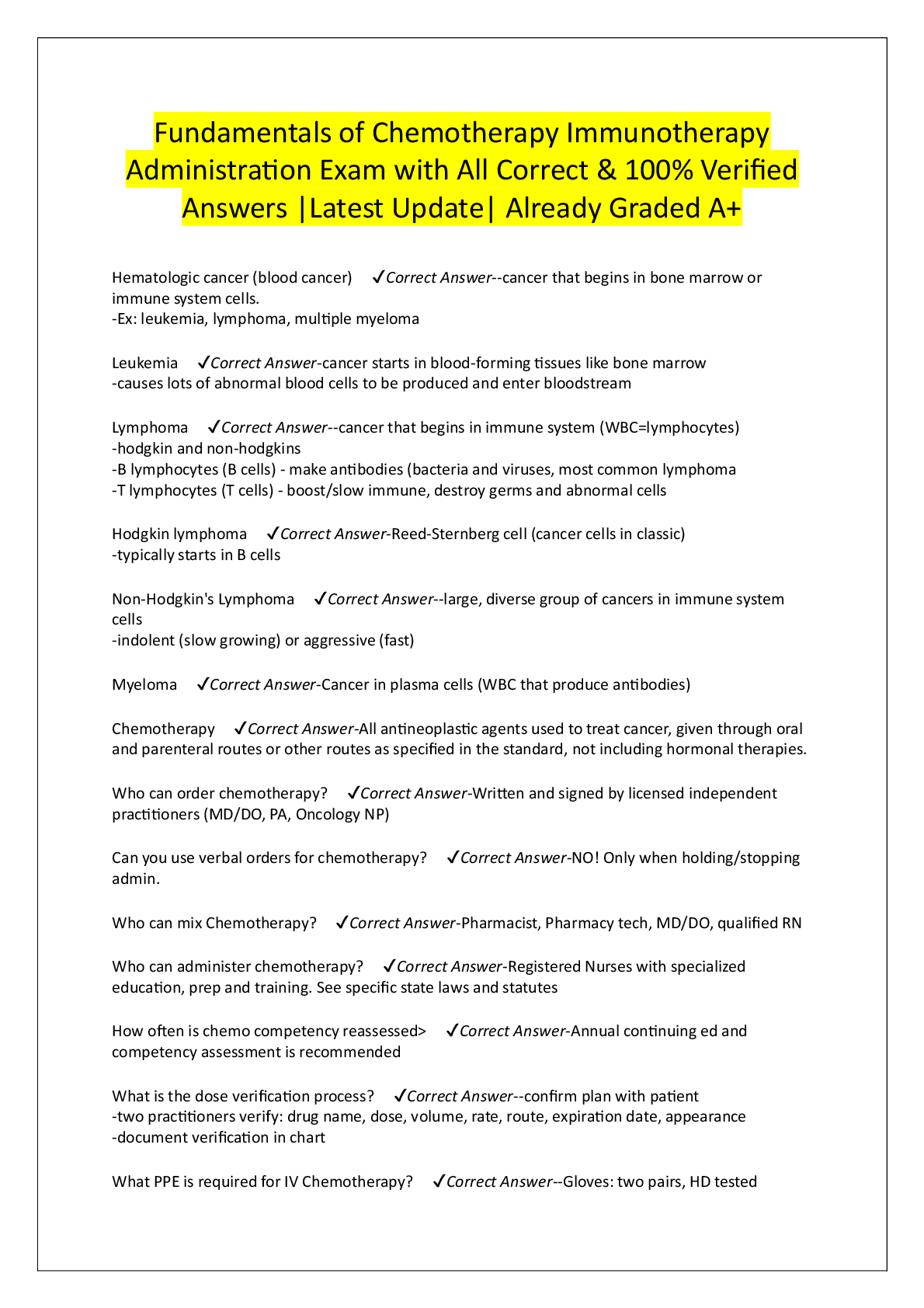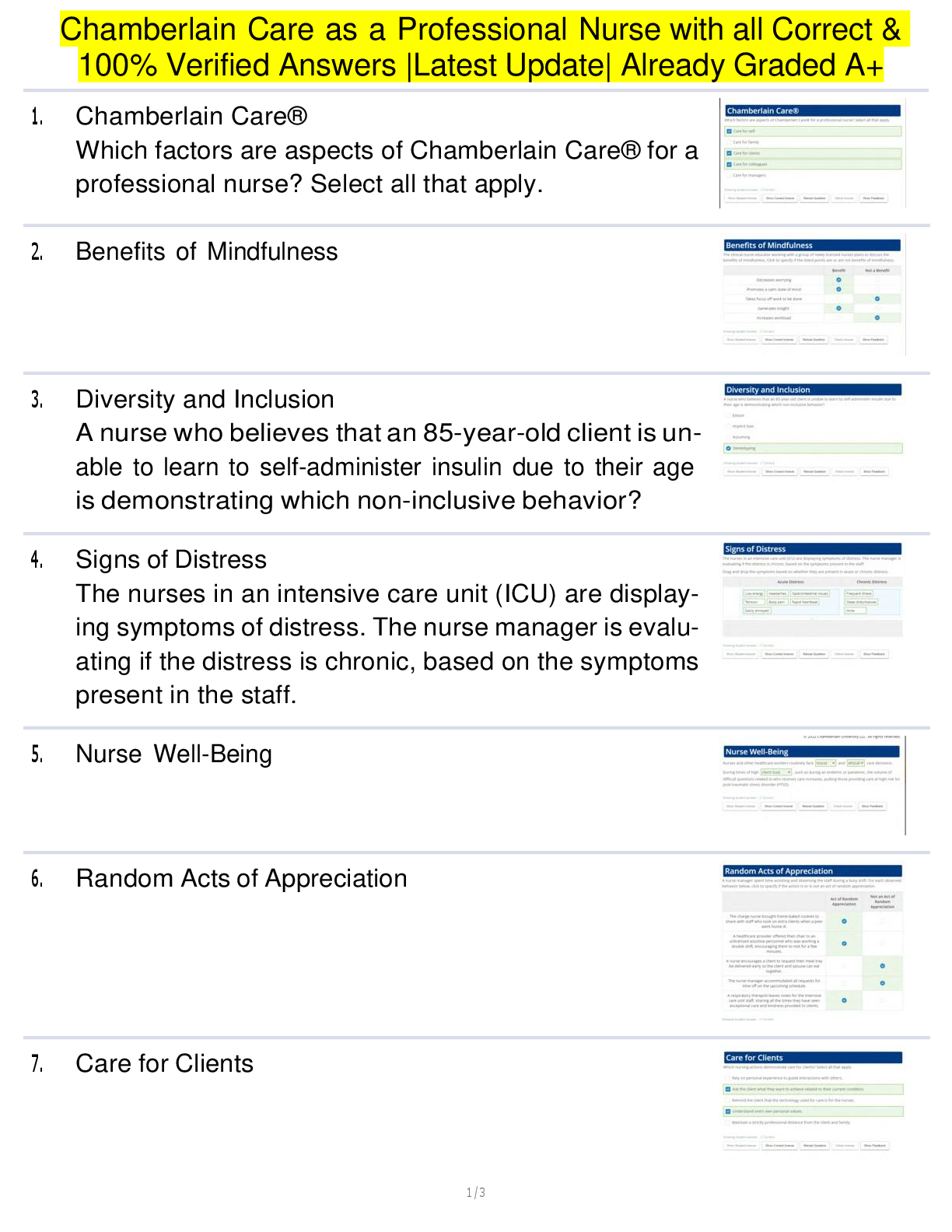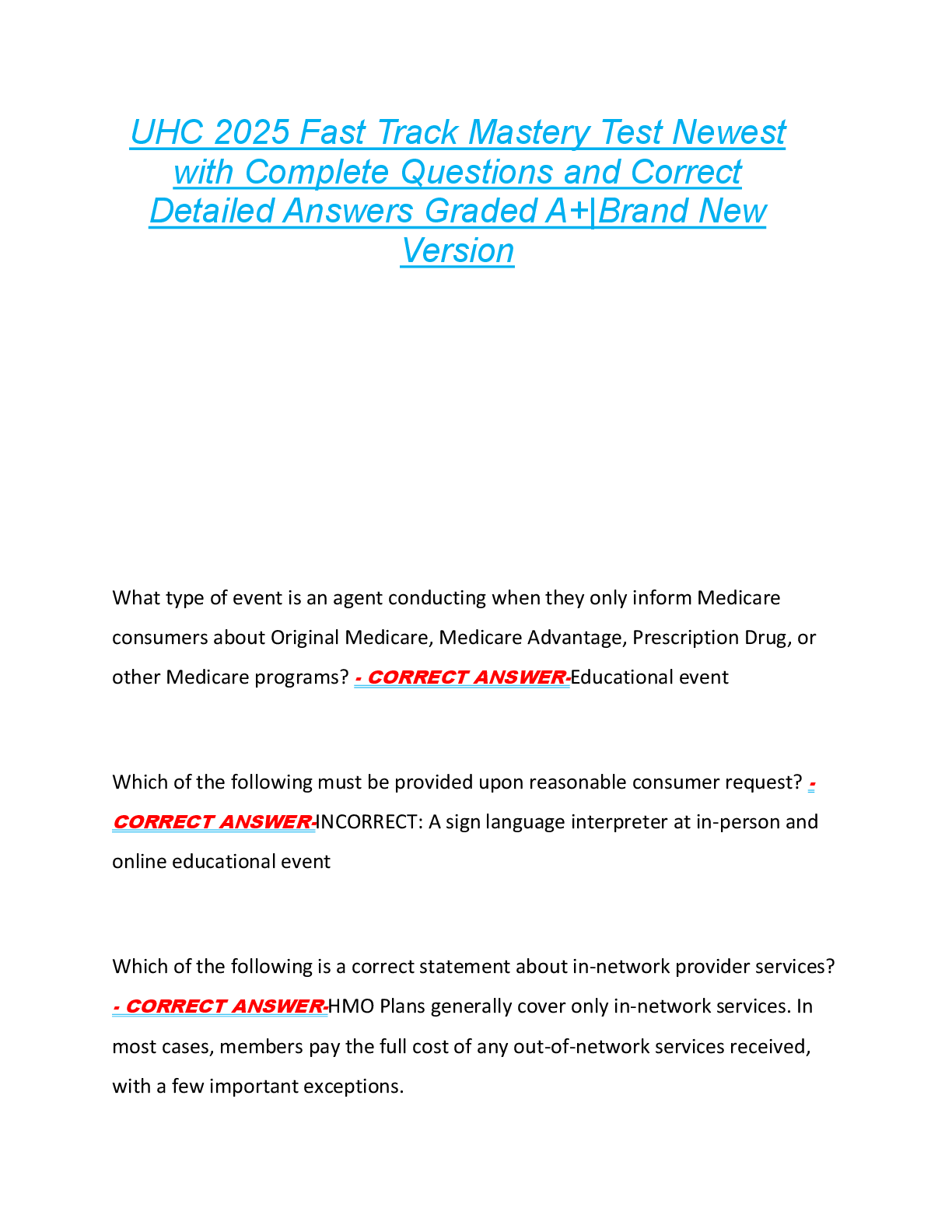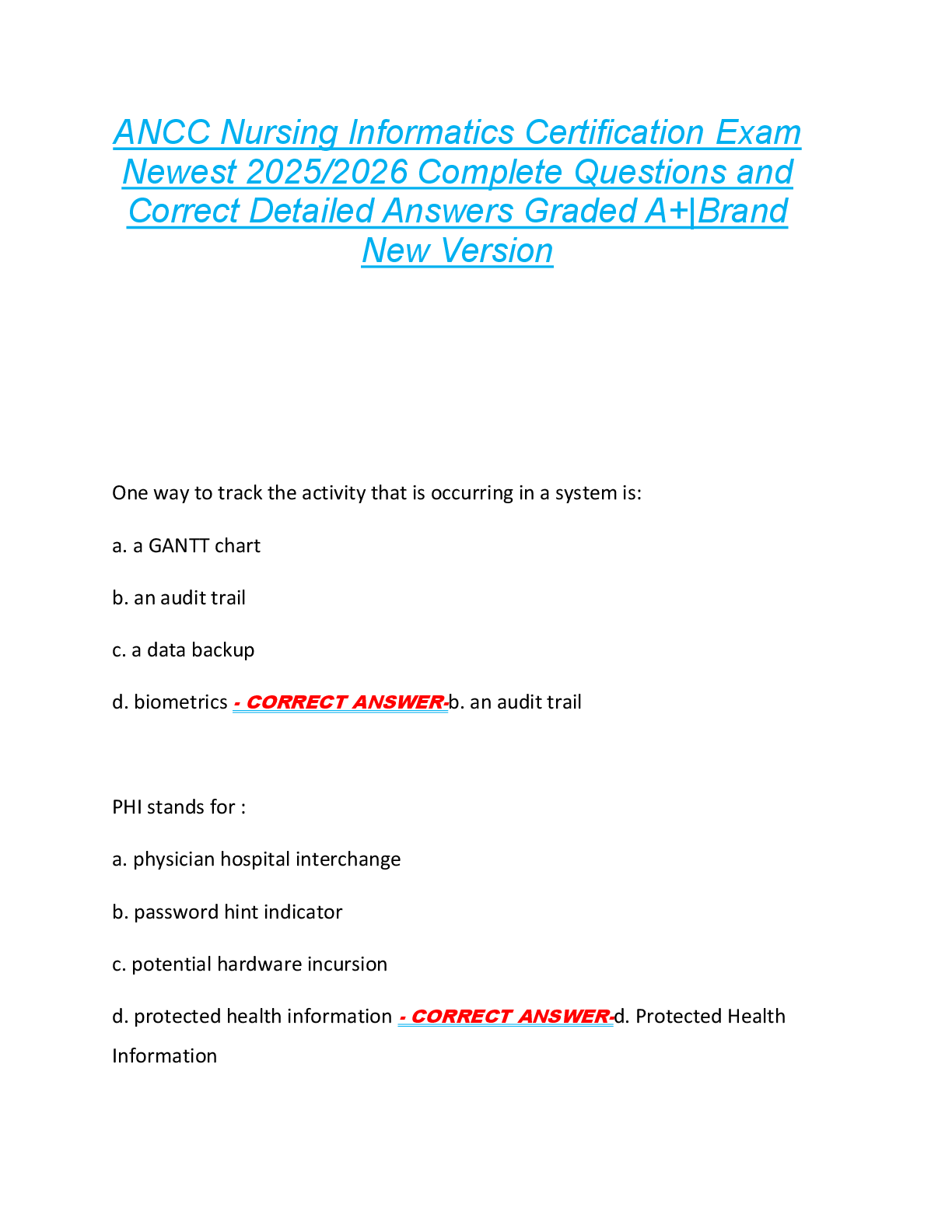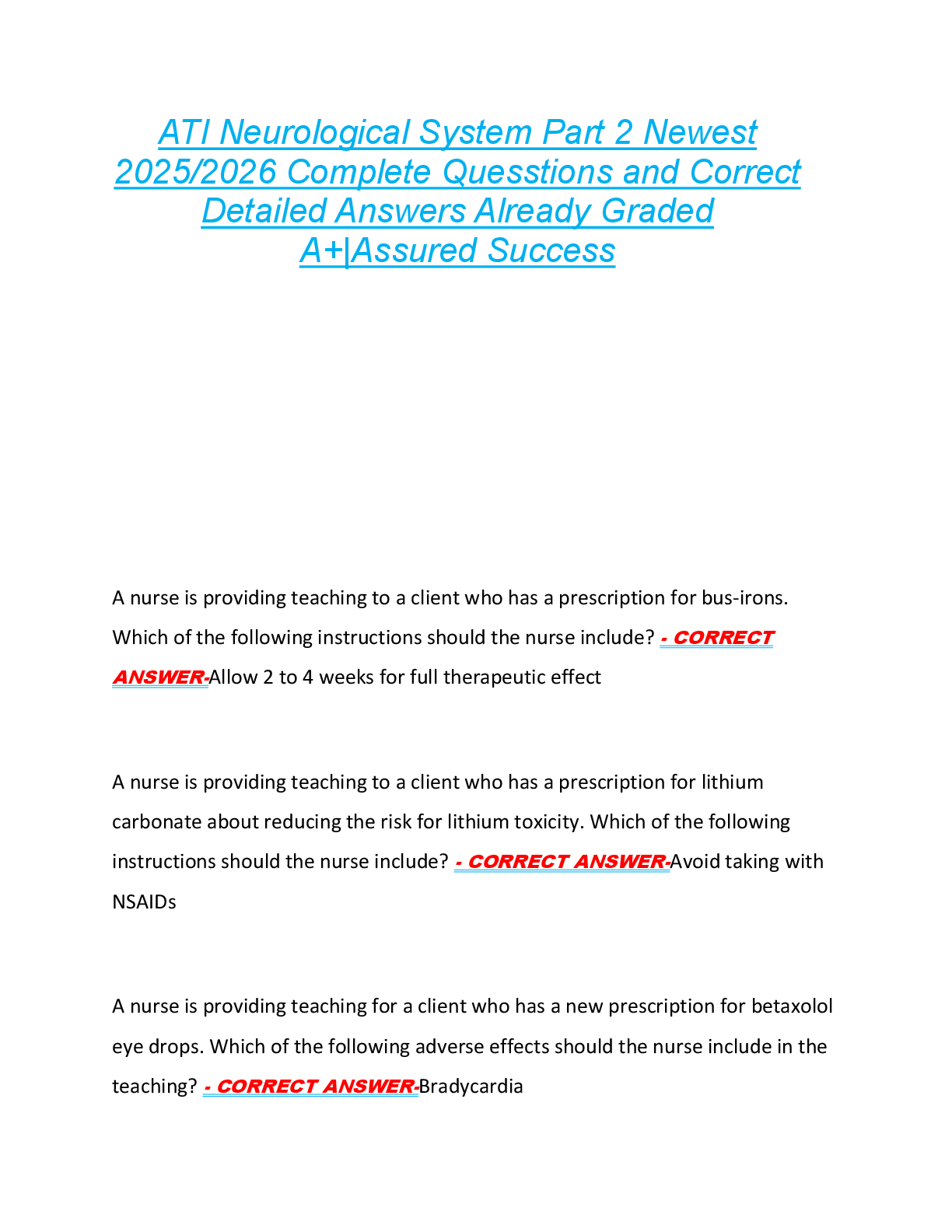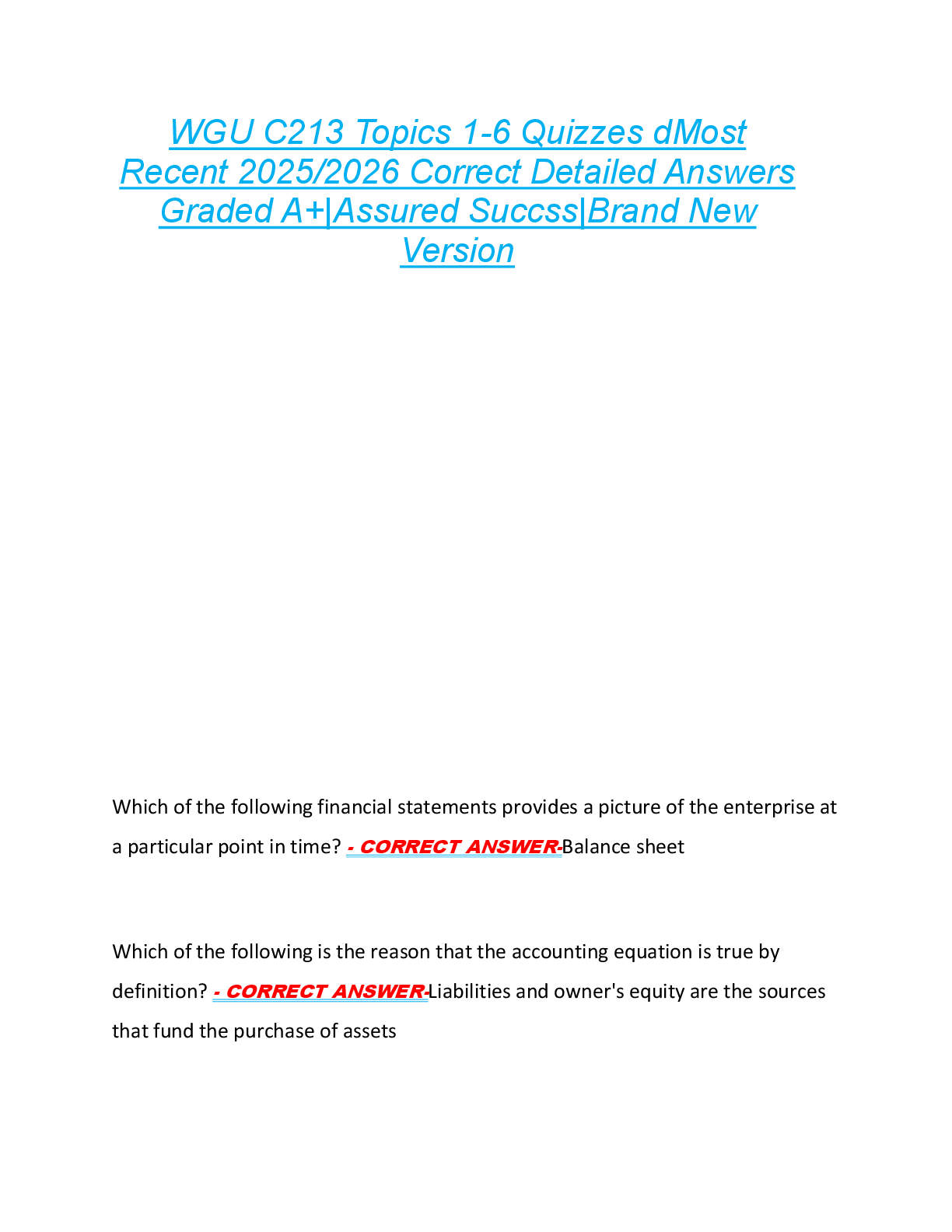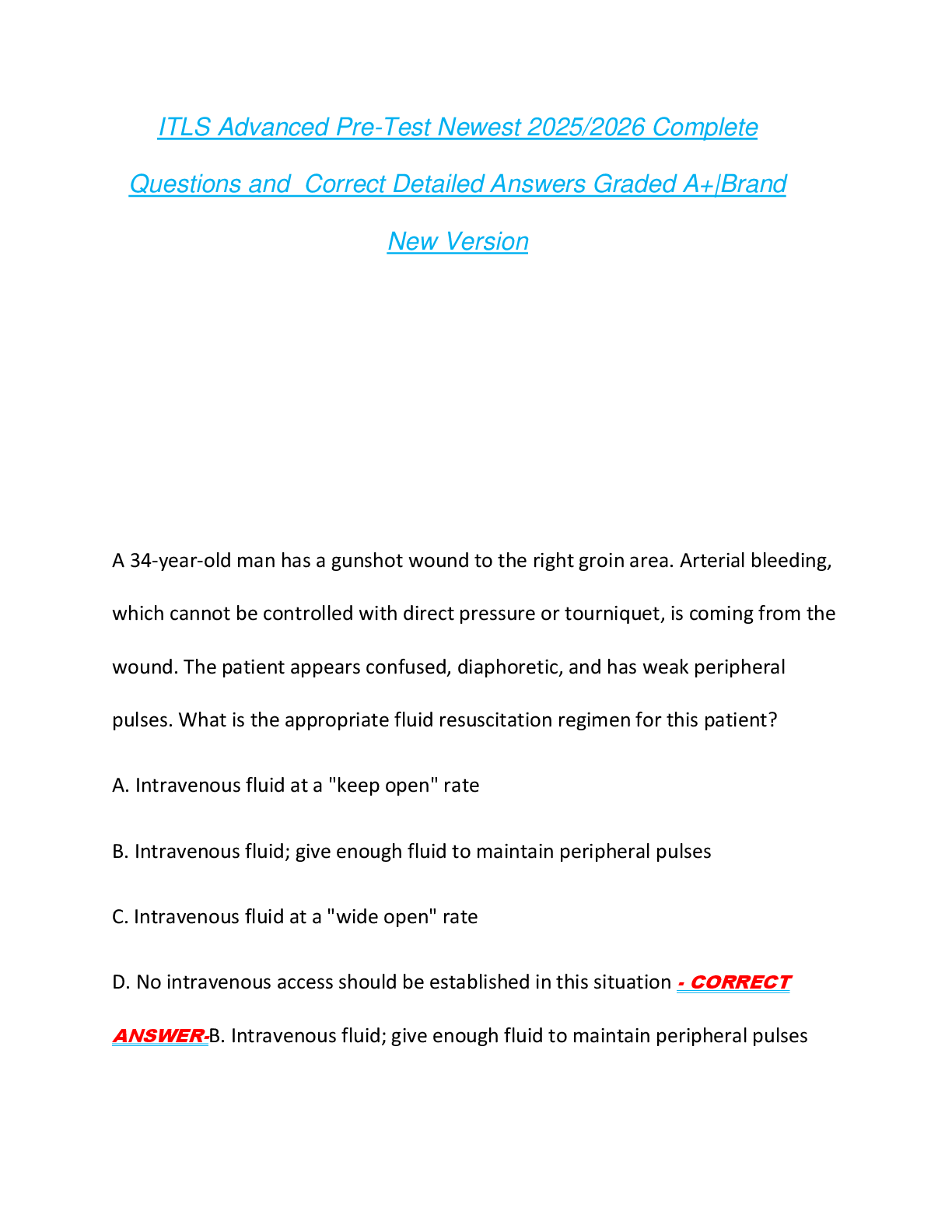Financial Accounting > EXAM > Conceptual Framework and Accounting Standards Q&A (4) (All)
Conceptual Framework and Accounting Standards Q&A (4)
Document Content and Description Below
Conceptual Framework and Accounting Standards Q&A (4) 1. Which of the following statements is correct? a. A provision is recognized only when it represents a present obligation. b. An event or tran ... saction whose outflow of economic benefits is probable and can be measured reliably is always recognized. c. A contingent asset that is possible is usually ignored. d. A contingent liability that is possible is ignored. 2. Intangible assets are measured as follows: Initial measurement Subsequent measurement a. cost fair value b. cost cost model or revaluation model c. cost cost model or fair value model d. fair value cost model or revaluation model 3. Which of the following properties meets the definition of investment property? I. Land held for long-term capital appreciation II. Property occupied by an employee paying rent at market rate III. Property being constructed on behalf of third parties IV. A building owned by an entity and leased out under an operating lease a. I and II b. I and IV c. II and IV d. II, III and IV 4. Which of the following is considered a bearer plant? a. Palm oil b. Corn oil c. Baby oil d. Oil palm 5. According to PFRS 1, when a first-time adopter presents one year comparative information to its first PFRS financial statements, it shall prepare, at the minimum, a. two statements of financial position and one of each of the other financial statements, and related notes. b. two statements of financial position and two of each of the other financial statements, and related notes. c. three statements of financial position and two of each of the other financial statements, and related notes. d. three statements of financial position and three of each of the other financial statements, and related notes. 6. On January 1, 20x4, Entity A has granted 600 share options to each of its 100 employees. The options vest in three years’ time. Each share option has a fair value of 100 on grant date. Information on employee departure is as follows: ₱ This study source was downloaded by 100000820529148 from CourseHero.com on 07-14-2022 14:43:27 GMT -05:00 https://www.coursehero.com/file/70990522/Conceptual-Framework-and-Accounting-Standards-QA-4docx/ • January 1, 20x4: estimate of employees leaving the entity during the vesting period – 4% • December 31, 20x4: revision of estimate of employees leaving to 5% before vesting date • December 31, 20x5: revision of estimate of employees leaving to 6% before vesting date • December 31, 20x6: actual employees leaving 5% How much is the salaries expense in 20x4? a. 6,000,000 b. 1,900,000 c. 2,000,000 d. 1,920,000 B (600 x 100 x 100) x 95% x 1/3 = 1,900,000 7. On January 1, 20x1, ABC Co. acquired 75% interest in XYZ, Inc. for 2,500,000 ₱ cash. ABC Co. incurred transaction costs of 250,000 for legal, accounting and ₱ consultancy fees in negotiating the business combination. ABC Co. elected to measure NCI at the NCI’s proportionate share in XYZ, Inc.’s identifiable net assets. The carrying amounts and fair values of XYZ’s assets and liabilities at the acquisition date were as follows: Assets Carrying amounts Fair values Cash in bank 25,000 25,000 Accounts receivable 425,000 300,000 Inventory 1,300,000 875,000 Equipment – net 2,500,000 2,750,000 Goodwill 250,000 50,000 Total assets 4,500,000 4,000,000 Liabilities Payables 1,000,000 1,000,000 How much is the goodwill (gain on a bargain purchase)? a. 140,000 b. 278,500 c. 287,500 d. 264,500 Solution: Fair value of identifiable assets acquired excluding goodwill (4,000,000 total assets – 50,000 goodwill) 3,950,000 Less: Fair value of liabilities assumed (1,000,000) Fair value of identifiable net assets acquired 2,950,000 Fair value of identifiable net assets acquired 2,950,000 This study source was downloaded by 100000820529148 from CourseHero.com on 07-14-2022 14:43:27 GMT -05:00 https://www.coursehero.com/file/70990522/Conceptual-Framework-and-Accounting-Standards-QA-4docx/ Multiply by: Non-controlling interest (100% - 75%) 25% NCI’s proportionate share in identifiable net assets 737,500 Goodwill (Negative goodwill) is computed as follows: Consideration transferred 2,500,000 NCI in the acquiree 737,500 Previously held equity interest in the acquiree - Total 3,237,500 Less: Fair value of identifiable net assets acquired (2,950,000) Goodwill 287,500 The 250,000 transaction costs are ₱ expensed. Acquisition-related costs do not affect the measurement of goodwill. 8. According to PFRS 5, assets held for sale are measured at a. fair value. b. fair value less costs to sell. c. carrying amount. d. lower of b and c 9. After recognition, exploration and evaluation assets are accounted for under the a. cost model b. fair value model c. revaluation model d. a or c 10.Entity A acquires a legal right to search for mineral resources in a specific area. What PFRS should Entity A apply in accounting for the costs it incurs on its exploration and evaluation activities? a. PAS 26 b. PFRS 4 c. PFRS 5 d. PFRS 6 11.Which of the following properly describes credit risk? a. The possibility that Entity A will not be able to settle its financial liabilities when they become due. b. The possibility that Entity A will incur loss on its foreign-currency denominated financial instruments when there is an adverse change in foreign exchange rates. c. The possibility that Entity A cannot collect on its receivables. d. The possibility that Entity A will be required to pay higher interest on its variablerate loan when market interest rates increase. 12.Andrix Domingo’s Sari-sari Store has a sign that reads “Your credit is good but I need cash.” What type of risk is Mr. Andrix trying to avoid by putting up that sign? This study source was downloaded by 100000820529148 from CourseHero.com on 07-14-2022 14:43:27 GMT -05:00 https://www.coursehero.com/file/70990522/Conceptual-Framework-and-Accounting-Standards-QA-4docx/ a. credit risk b. market risk c. liquidity risk d. store risk 13.Which of the following is not among the quantitative thresholds under PFRS 8? a. At least 10% of total revenues (external and internal) b. At least 10% of the higher of total profits of segments reporting profits and total losses of segments reporting losses, in absolute amount. c. At least 10% of total assets (inclusive of intersegment receivables). d. At least 10% of total revenues (external only) 14.Rex Banggawan Co. acquires investment in stocks of Darrell Joe Asuncion. The investment will be held for trading and it gives Rex neither significant influence nor control over Darrell. Rex will most likely measure the investment a. at fair value through profit or loss. b. using the equity method. c. at amortized cost. d. at historical cost 15.According to PFRS 10, which of the following is not an element of control? a. power b. exposure, or rights, to variable returns c. major holdings d. ability to affect return. 16.Which of the following is a peculiar characteristic of a joint arrangement? a. significant influence b. joint control c. control d. joint venture 17.This PFRS provides a single framework for measuring the fair value of an asset, liability or equity when other PFRSs require or permit measurement at fair value or fair value less costs to sell. It also prescribes the disclosures related to fair value measurement. a. PFRS 3 b. PAS 1 c. PFRS 9 d. PFRS 13 18.Entity A’s assets have a carrying amount of 100,000 before year-end adjustments. ₱ The PFRSs require these assets to be measured at fair value at each reporting date. Location is a characteristic of the assets. Information at year-end is as follows: Active Market #1 Active Market #2 Quoted price Quoted price This study source was downloaded by 100000820529148 from CourseHero.com on 07-14-2022 14:43:27 GMT -05:00 https://www.coursehero.com/file/70990522/Conceptual-Framework-and-Accounting-Standards-QA-4docx/ ₱130,000 ₱135,000 Transport costs 10,000 Transport costs 12,000 Costs to sell 2,000 Costs to sell 3,000 If neither Active Market #1 nor Active Market #2 is the principal market, how much is the fair value? a. 135,000 c. 120,000 b. 132,000 d. 123,000 Solution: The “most advantageous market” is determined as follows: Active Market #1 Active Market #2 Quoted price 130,000 135,000 Transport costs (10,000) (12,000) Costs to sell (2,000) (3,000) Net sale proceeds 118,000 120,000 The fair value is computed as follows: 135,000 price in active market #2 – 12,000 transport costs = 123,000 19.Arrange the following steps of revenue recognition in accordance with PFRS 15. I. Identify the performance obligations in the contract II. Recognize revenue when (or as) the entity satisfies a performance obligation III. Determine the transaction price IV. Identify the contract with the customer V. Allocate the transaction price to the performance obligations in the contract a. IV, I, III, V, II c. III, IV, I, V, II b. IV, I, V, III, II d. IV, III, I, V, II This study source was downloaded by 100000820529148 from CourseHero.com on 07-14-2022 14:43:27 GMT -05:00 https://www.coursehero.com/file/70990522/Conceptual-Framework-and-Accounting-Standards-QA-4docx/ Powered by TCPDF (www.tcpdf.org) [Show More]
Last updated: 3 years ago
Preview 1 out of 5 pages

Buy this document to get the full access instantly
Instant Download Access after purchase
Buy NowInstant download
We Accept:

Reviews( 0 )
$10.00
Can't find what you want? Try our AI powered Search
Document information
Connected school, study & course
About the document
Uploaded On
Jul 14, 2022
Number of pages
5
Written in
All
Additional information
This document has been written for:
Uploaded
Jul 14, 2022
Downloads
0
Views
94

